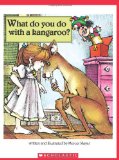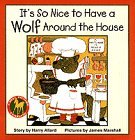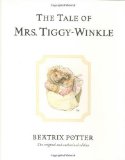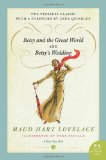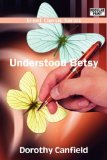 I loved this book as a child, I’ve read it countless times. Little Elizabeth Ann has been raised by her dear Aunts in the city. She is a frail little thing who is prone to tears and easily frightened. When her Aunts become too sickly to care for her, she must be sent off to live with the only relatives who will take her, the dreaded Putney cousins in Vermont.
I loved this book as a child, I’ve read it countless times. Little Elizabeth Ann has been raised by her dear Aunts in the city. She is a frail little thing who is prone to tears and easily frightened. When her Aunts become too sickly to care for her, she must be sent off to live with the only relatives who will take her, the dreaded Putney cousins in Vermont.
There in Vermont, Elizabeth Ann goes through an amazing transformation. Cared for by no-nonsense New Englanders whose methods could not be more opposite than the fluttery city Aunts, Betsy becomes independent, confident and strong. In short, she thrives. In both places, she was very much loved. But it is clear that the Putney cousins have the upper hand when it comes to effective child-rearing techniques. This is not by accident.
The author, Dorothy Canfield Fisher, is no everyday children’s author. She’s an educational reformer who played a large part in bringing the Montessori method to America and a noted social activist. Eleanor Roosevelt named her as one of the ten most influential women in America and it is no wonder. It’s amazing to see how she has created a story that absolutely is capable of captivating children but also carries such an important message for their caregivers.
So much of what Fisher was advocating in the early 1900s (Understood Betsy was originally published in 1916) is very much in keeping with the latest recommendations in education.
While Betsy is with her city Aunts she is fussed and fretted over constantly. Her aunt Frances desperately wants to be privy to all parts of Elizabeth Ann’s young soul, encouraging her to share every dream, every worry (to the point where Elizabeth Ann is sometimes even fabricating awfulness so as not to be a disappointment to her dear, dear Aunt). She is helped over every difficulty before she even has an opportunity to know that it is a difficulty. At school she is struggling with Math yet bored because she is too far ahead in Reading. Nothing from school has any real world significance to her.
But on the Putney farm, Betsy is left to learn experientially. She is allowed to make mistakes and learn from them. She encounters real life history lessons that make the Declaration of Independence relevant. Making butter with her aunt, Betsy discovers that pounds and ounces are not the creation of an evil Math professor but something useful in her actual life. The one room school she attends allows for differentiated instruction, so that Betsy may read a seventh grade reader, but practice her math skills with the second grade. Betsy develops confidence and pride because she is able to accomplish so much independently.
Fisher’s message is clear. Elizabeth Ann/Betsy is beloved in both of her homes, but when she was being coddled and protected from all of life’s ups and downs she was done no favors. And in allowing Betsy to take responsibility, do things by herself and sometimes even make mistakes the Putneys have helped her become a much happier, healthier version of herself.
On a side note, I would also like to state for the record that this book is entirely without butterflies and pens. Whoever made the decision to slap a generic “girly” cover on a work of this appeal and social significance is an idiot.
Great for: Subtle indoctrination. Want your kids to feel grateful for their chores, responsibilities and independence? Let them compare Elizabeth Ann to Betsy and see who comes out the winner. Then challenge them to think about why.
One Awkward Moment: One subplot that always left me a bit miffed – there’s a little boy who is much neglected by his alcoholic stepfather. The neighbors decide that perhaps he should be adopted by a kinder, wealthier man. They make him some new clothes and get him cleaned up. His stepfather sells the clothes for alcohol, but thankfully little ‘Lias is rescued anyway. For me the question of adoption was a bit glossed over, perhaps because ‘Lias was in the care of a stepparent? I may be bringing my modern day sensibilities to this (Shouldn’t social services be consulted? Is the stepfather the legal guardian?). The subplot does raise a lot of important issues relating to charity and charitable behavior.
Sex, Nudity, Dating – None.
Profanity – “You gump,” “darned,” used twice.
Death, Violence and Gore – None.
Drugs, Alcohol and Smoking – Little ‘Lias’s father drinks heavily.
Frightening or Intense Things – Elizabeth Ann is an orphan. Elizabeth Ann has terrible dreams about Indians scalping her or falling from a school window and being broken to bits. Sometimes she dreams of lying in a little white coffin. Aunt Harriet is quite ill and must move to a warm climate immediately. There is scarlet fever and a quarantine. She rides in a wagon and is terrified she’ll be crushed beneath the wheels. Molly’s mother takes ill and must be sent away. ‘Lias’s mother is dead.


